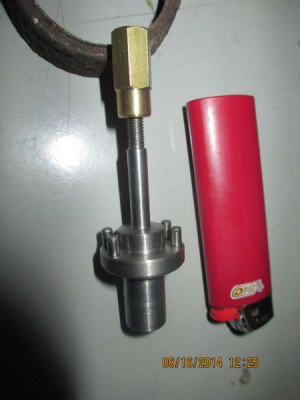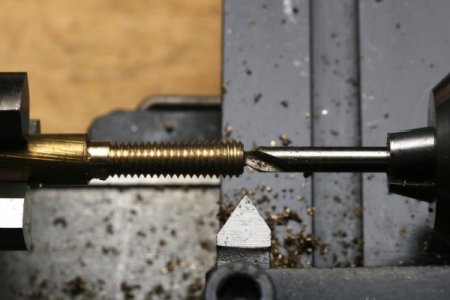No, I don't own one. If I need to support the work with a tailstock and don't have tool clearance to get in there, then I grind away tool bit or do something else to get clearance. This could mean making a special center to do the work. I think the smallest piece I have manually threaded on my lathe is 10-32 with with about 3 inches of stick out. I supported this with a center and stuck the tool out a long ways to get clearance.
I don't have a picture of the setup but here is the part
View attachment 283800
I don't have a tailstock on my CNC lathe so everything has to be close to the chuck. But I don't have much experience yet threading on the CNC, in fact I cut the first actual threads on it yesterday.

It was pretty easy because it was 1.5''-18 thread about 2 inches from the chuck. Not a lot of spring there.


